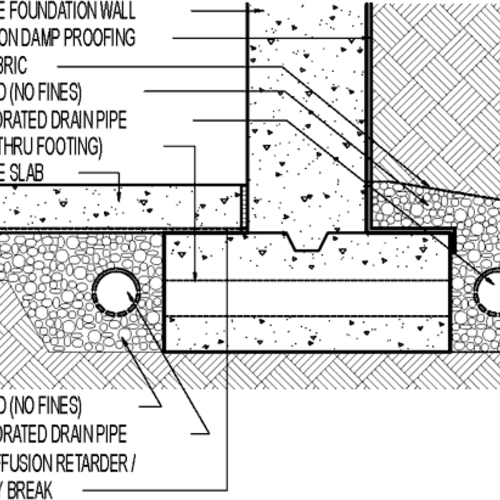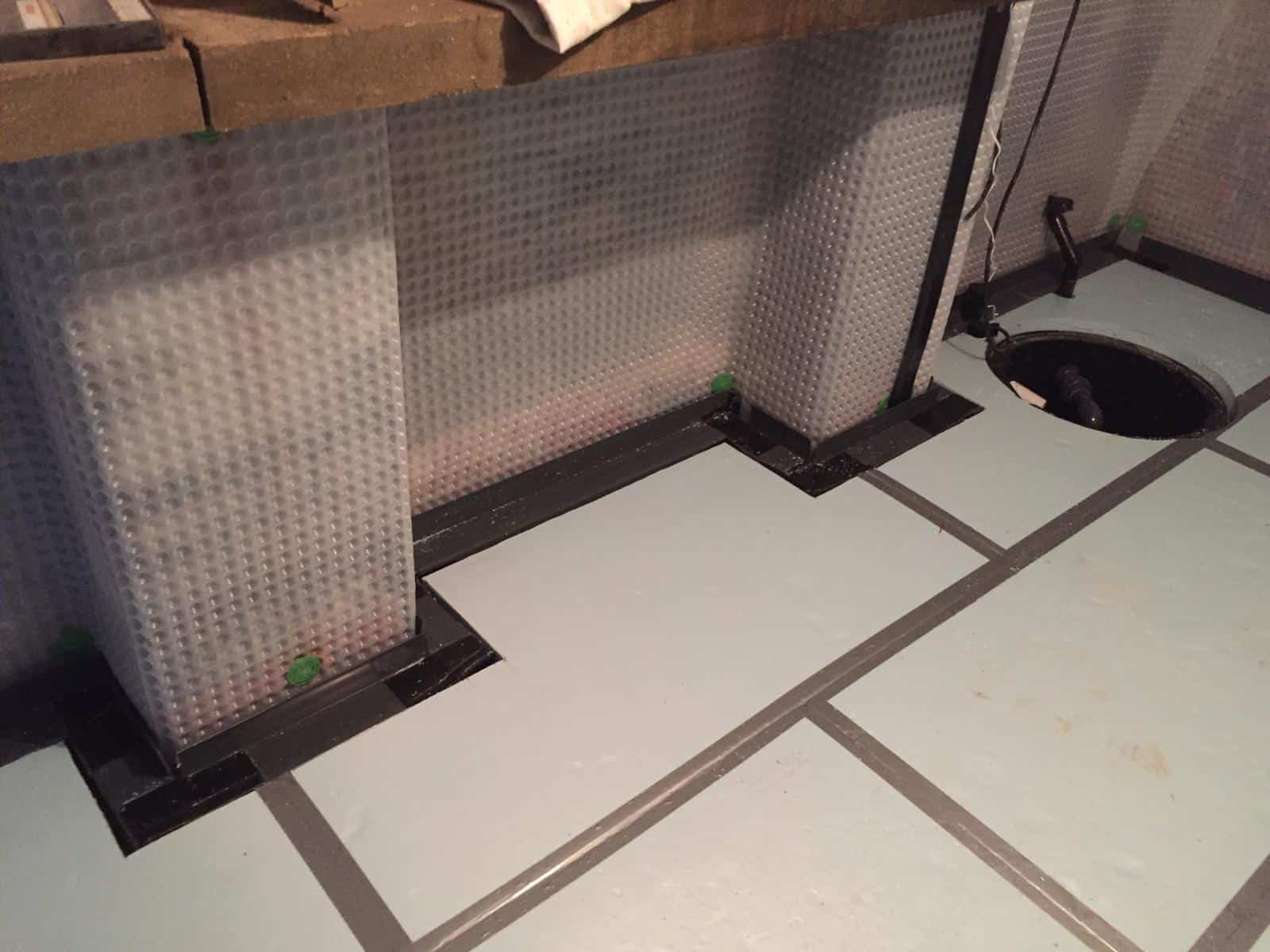Exploring the Different Techniques and Solutions for Effective Damp Proofing
Dampness in structures postures significant difficulties to both architectural honesty and interior air quality. Different strategies and solutions have emerged to battle this pervasive problem. From traditional damp-proof membranes to cutting-edge chemical therapies, each method provides special benefits. Recognizing these options is essential for reliable dampness control. Picking the right solution depends on specific structure conditions and needs, prompting further expedition right into the most efficient damp proofing strategies available.
Understanding the Reasons For Dampness
Although dampness can arise from numerous sources, understanding these reasons is vital for reliable removal. Generally, moisture originates from 3 main sources: rising damp, permeating wet, and condensation. Increasing damp takes place when groundwater takes a trip up-wards via porous products, such as block or rock, typically because of an absence of an efficient barrier (damp proofing newcastle). Permeating moist is normally triggered by external elements, consisting of roofing system leakages, damaged rain gutters, or damaged walls, permitting water to infiltrate a residential or commercial property. Condensation, on the various other hand, arises from excess dampness in the air, often worsened by poor air flow and temperature distinctions, resulting in water droplets creating on surfaces. Determining these underlying issues is essential, as each type of wetness needs a customized method for removal. Proper evaluation aids in figuring out one of the most effective options, inevitably securing the structural stability of a structure and improving interior air top quality
Conventional Damp-Proof Membranes

Chemical Damp-Proofing Solutions
Chemical damp-proofing services provide an ingenious technique to stop wetness breach in structures. These approaches generally involve the application of liquid chemicals that permeate masonry and develop an obstacle against increasing moist. Frequently utilized chemicals consist of silanes, siloxanes, and various other water-repellent representatives that respond with surface area products to develop a hydrophobic layer.The application procedure usually requires exploration openings right into the wall surfaces, infusing the chemical remedy, and allowing it to treat. This technique is especially beneficial for older frameworks where traditional damp-proof membrane layers might be not practical. Chemical damp-proofing can be much less turbulent and extra cost-efficient than substantial restoration projects.While efficient, these services depend on proper application and ecological problems for peak performance. mould removal newcastle. Regular maintenance and surveillance are important to ensure the longevity of the damp-proofing therapy. In general, chemical damp-proofing stands for a flexible option for guarding buildings versus moisture-related damage
Cavity Wall Surface Building Techniques
Tooth cavity wall building techniques supply countless advantages, particularly in dampness control and energy effectiveness. By incorporating an air space in between two layers of stonework, these walls properly minimize water access while boosting insulation. This combination not just shields structures from dampness however also adds to lowered energy consumption.
Benefits of Tooth Cavity Walls
When taking into consideration efficient damp proofing techniques, the benefits of cavity walls stand out prominently. Tooth cavity wall surfaces contain two different layers, producing an air gap that properly minimizes wetness infiltration. This layout minimizes the threat of dampness, as the external wall surface acts as an obstacle versus rainfall and water access. In addition, cavity walls enhance thermal insulation, which contributes to energy efficiency by lowering warmth loss. They additionally give audio insulation, aiding to develop a quieter interior setting. Moreover, the air void permits air flow, which helps in wetness control and minimizes the probability of mold growth. These benefits not only boost the total convenience of a structure yet additionally contribute to its longevity and architectural honesty.
Wetness Control Techniques
Effective moisture control approaches are critical in tooth cavity wall building and construction to guarantee lasting security versus dampness. One main method includes the unification of weep openings, which facilitate water drain from the cavity, protecting against buildup. In addition, making use of breathable membrane layers can help manage dampness levels while enabling caught vapor to get away. Correct positioning of insulation is additionally vital, as it should not obstruct water drainage paths. Making certain that the outer leaves of the tooth cavity wall are created with water-resistant products boosts overall sturdiness. Regular maintenance checks are necessary to recognize any kind of blockages or damages early, safeguarding the framework's stability. Ultimately, a combination of these methods creates a robust protection versus dampness breach in dental caries walls.
Insulation and Energy Effectiveness
Insulation plays a crucial role in improving energy effectiveness within tooth cavity wall building and construction. By incorporating protecting materials, these wall surfaces develop a thermal obstacle that minimizes heat loss and minimizes power usage. Efficient insulation not only helps keep a secure interior temperature level however additionally reduces the risk of dampness, as it prevents condensation within the wall surface dental caries. Numerous methods, such as making use of rigid foam boards or mineral wool, can be utilized to achieve optimal insulation performance. Additionally, correct installment is important to guarantee that gaps and gaps are decreased, which can or else compromise power effectiveness. Ultimately, a well-insulated dental caries wall surface adds greatly to total sustainability and reduces heating & cooling prices for house owners.
External Damp Proofing Approaches
External wet proofing techniques are important for safeguarding frameworks from moisture seepage. Two efficient techniques consist of the application of waterproof membrane layers and the installation of French drains pipes. These services assist mitigate water build-up and maintain the stability of structures.
Waterproof Membrane Application
While different approaches exist for avoiding dampness ingress, the application of water-proof membranes stays a very effective outside damp proofing method. These membrane layers are typically made from products such as polyethylene, rubber, or changed bitumen, supplying a robust barrier versus water penetration. The installment process includes using the membrane to the external surfaces of foundations or walls, guaranteeing complete insurance coverage to stop leakages. Correct attachment and sealing at joints are important to maximizing performance. Water-proof membranes can be applied in different types, including fluid layers and sheet membrane layers, allowing for flexibility based on the details demands of the framework. This technique not just shields structures from dampness but additionally improves their durability and structural stability.
French Drainpipe Installment
One reliable technique for managing groundwater and stopping wetness build-up around a building's structure is the setup of a French drain. This drainage system includes a trench full of crushed rock and a perforated pipeline that redirects surface water far from the structure. Appropriate setup requires cautious planning, ensuring that the drainpipe slopes far from the framework to assist in excellent water circulation. Furthermore, the location of the drain is important; it should be placed in locations prone to merging or excess wetness. Regular upkeep, including clearing particles from the crushed rock and guaranteeing the pipe continues to be unhampered, is crucial for long-lasting effectiveness. Inevitably, a well-installed French drain can greatly lower the risk of water-related concerns in foundations and cellars.
Interior Waterproofing Approaches
Interior waterproofing strategies are crucial for safeguarding a building's inside from wetness infiltration and possible water damage. These strategies generally entail the application of specific materials and strategies developed to produce a moisture obstacle within the structure. One usual technique is making use of water-proof finishes or sealants on wall surfaces and floors, which protect against moisture from passing through surfaces.Additionally, installing interior water drainage systems, such as sump pumps, can effectively take care of water accumulation in basements and creep rooms. Another technique entails the usage of vapor obstacles, which are installed to inhibit dampness activity from the ground into living spaces.Moreover, resolving any fractures or spaces in walls or structures with suitable sealers assures a detailed defense against water breach. By implementing these indoor waterproofing strategies, homeowner can substantially reduce the threat of mold growth, architectural damages, and other moisture-related problems. Appropriate implementation of these techniques is important for long-lasting protection and building integrity.
Routine Upkeep and Evaluation Practices
Routine upkeep and inspection techniques are essential for guaranteeing the long-lasting effectiveness of moist proofing remedies website in any kind of structure. Regular checks enable residential property owners to identify very early signs of wetness breach, such as peeling off paint, mold and mildew growth, and stuffy smells. These indicators can indicate underlying concerns that need immediate attention.Inspections ought to be conducted at least each year, concentrating on vulnerable areas like basements, crawl areas, and exterior walls. During these evaluations, home owners should check out sealants, drainage systems, and air flow to verify they operate correctly.Additionally, preserving gutters and downspouts is crucial, as blocked systems can cause water accumulation near the structure. Executing a normal maintenance timetable, together with timely repair services, can considerably expand the life-span of moist proofing measures and secure the structural stability of the structure. Positive measures eventually add to the total health and wellness of the living environment.
Often Asked Inquiries
The Length Of Time Does Damp Proofing Usually Last?
The period of damp proofing efficiency differs, usually lasting in between 20 to 50 years. Variables such as application quality, ecological conditions, and maintenance methods considerably influence the longevity of the moist proofing therapy.

Can I Damp Evidence My Home Myself?
The private contemplated the usefulness of DIY damp proofing. With correct research study and the right products, it is possible. They likewise recognized the significance of expert assistance to assure lasting effectiveness and stop future problems.
What Are the Indications of Inadequate Damp Proofing?
Indicators of ineffective damp proofing include consistent mildewy smells, noticeable mold development, peeling paint, wet spots on wall surfaces, and wood degeneration - damp removal newcastle. Property owners must attend to these problems immediately to avoid additional damage and wellness concerns
Does Damp Proofing Affect Indoor Air Top Quality?

Just How Much Does Expert Damp Proofing Price?
Professional moist proofing prices vary substantially, normally ranging from $1,000 to $5,000 depending upon the home's dimension, the level of the wet issue, and selected techniques. Each circumstance calls for a customized analysis for accurate rates. Frequently, dampness originates from three primary sources: increasing damp, passing through wet, and condensation. When considering effective moist proofing approaches, the benefits of cavity walls stand out prominently. Outside moist proofing approaches are important for securing frameworks from dampness seepage. While numerous methods exist for stopping dampness access, the application of water-proof membrane layers stays a very reliable external wet proofing technique. Indicators of ineffective moist proofing include consistent musty odors, noticeable mold and mildew growth, peeling off paint, moist patches on walls, and timber degeneration.